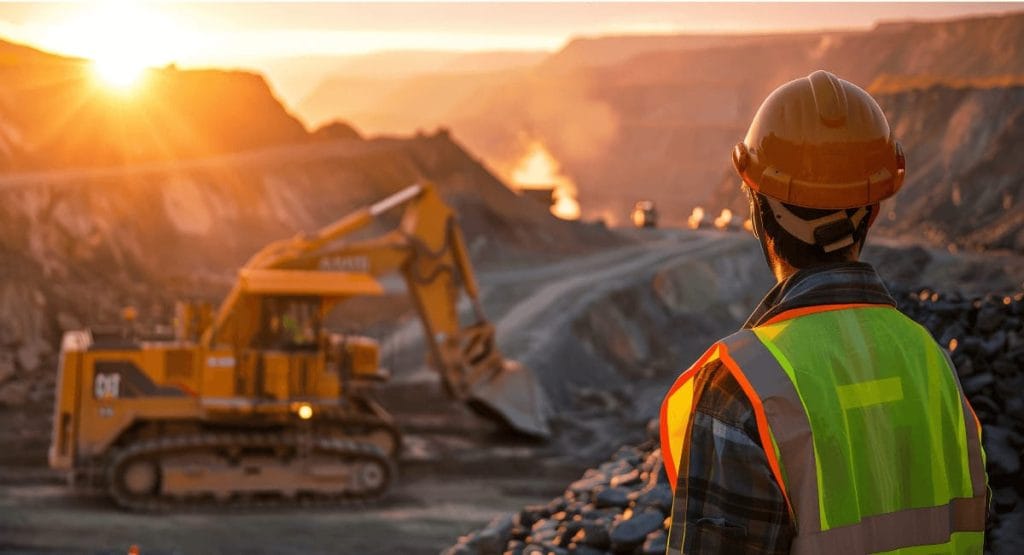$18 Trillion Investor Coalition Launches 10-year Plan to Make Mining more Responsible

- Global Investor Commission on Mining 2030 launches a 10-year vision backed by asset owners and managers overseeing $18 trillion, with technical support from UNEP and alignment with PRI’s $128 trillion network.
- Proposals include an independent International Minerals Agency, a Global Legacy Fund for mine closure liabilities, and investor expectations for auto and technology buyers to embed responsible sourcing.
- Seven goals for 2035 target credible performance standards, stronger governance, conflict reduction, and value sharing with communities to unlock capital for the minerals required by clean energy and digital infrastructure.
An investor-led commission representing $18 trillion in assets has released a 10-year plan to lift environmental and social performance across global mining, aiming to channel capital toward operators that meet credible, independently assessed standards. Unveiled by the Global Investor Commission on Mining 2030 on the eve of the UN-backed Principles for Responsible Investment’s flagship conference and one week before COP30, the blueprint sets seven goals for 2035 to meet surging demand for copper, nickel, lithium and other transition minerals without repeating historic harms.
The Commission is backed by asset owners and managers including the Church of England Pension Fund, PIMCO, Legal & General, Ninety One, ING, Orion Resource Partners, Sweden’s AP funds Council on Ethics and Royal London Asset Management. It has received technical support from the UN Environment Programme and is aligned with PRI’s global investor network. Commission representatives met President Luiz Inácio Lula da Silva and cabinet members on 30 October to discuss government roles in building a rules-based mining system as Brazil hosts COP30.
What the plan would change
At its core, the Commission urges investors to move beyond blunt exclusions and short-term incentives and instead drive continuous improvement across mines and value chains. Key proposals include:
- Establishing an independent International Minerals Agency to monitor global supply-demand balances, track illicit flows, codify best-practice legislation and publish company-level progress against global performance standards to inform debt and equity markets.
- Creating a Mining Performance Assessment Framework that enables investors to compare companies’ practices, reward improvement and steer capital accordingly.
- Supporting a Global Legacy Fund to address under-provisioned closure and post-closure liabilities, and to remediate legacy sites that constrain new investment and community trust.
- Issuing investor expectations for downstream purchasers—automakers, technology and agriculture companies—to incorporate responsible purchasing criteria and verify sourcing.
- Encouraging ESG and data providers to refine sector methodologies so that mining is assessed on practice quality and verified improvement rather than blanket sector penalisation.
- Developing a sovereign-level framework to evaluate how bond issuers govern mining, reflecting regulatory quality, permitting integrity and benefit sharing.
- Establishing a Global Centre for Peacebuilding and Business in South Africa to reduce conflict-linked risks, support responsible operating models and deter illicit trade.
The seven 2035 goals
The Vision sets measurable direction around: mobilizing capital to a responsible and resilient industry; credible independent performance standards; responsible sourcing embedded across value chains; enabling regulation and institutions; meaningful engagement and equitable benefit sharing with communities; reduction of extraction-related conflict; and addressing historic legacies while creating positive ones at current sites.
RELATED ARTICLE: GeologicAI Secures $44M Series B to Scale AI-Driven Mineral Discovery with Backing from BHP and Rio Tinto
Voices from the Commission
Adam Matthews, Commission Chair and Chief Responsible Investment Officer at the Church of England Pensions Board, framed the choice plainly: investors can help build a responsible, rules-based mining system that generates long-term value and community benefits, or accept disorder that erodes social licence and raises risk. Several commissioners stressed that underinvestment threatens the energy transition and that clear expectations—paired with new institutions—are needed to unlock capital at scale.
Implications for boards, CFOs and policymakers
For company leaders, the Commission’s framework is a map for capital access. Executives should expect sharper investor scrutiny of mine-site performance, independent assurance, closure provisioning and community agreements, alongside pressure to cascade standards into contractor management and joint ventures. Buyers of minerals will face investor-backed expectations to align procurement with responsible sourcing and to verify chain-of-custody claims.
For policymakers and regulators, the proposals raise the bar on permitting transparency, predictable royalty regimes, and enforcement capacity. Countries seeking to grow mining’s contribution to national development—and to issue competitively priced sovereign debt—will be judged on governance quality and their ability to curb illicit flows.
For investors, the blueprint offers tools to differentiate leaders from laggards, reduce litigation and conflict risks, and support credible transition-metal supply. It also challenges passive policies that treat mining monolithically, encouraging dynamic indices and stewardship that reward verified improvement.
Why this matters beyond mining
The clean energy build-out, data centre growth and grid modernization cannot proceed without new metal supply. The Commission’s plan seeks to align that reality with global sustainability frameworks by anchoring performance in credible standards, transparent data and enforceable expectations. If adopted widely, the approach could reduce risk premia, improve community outcomes and accelerate bankable projects across key jurisdictions. As COP30 convenes, the message is pragmatic: responsible mining is not optional. It is the gatekeeper to the energy transition’s timelines, costs and legitimacy.
Follow ESG News on LinkedIn












